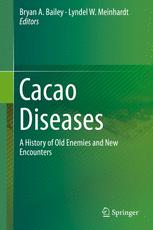

Most ebook files are in PDF format, so you can easily read them using various software such as Foxit Reader or directly on the Google Chrome browser.
Some ebook files are released by publishers in other formats such as .awz, .mobi, .epub, .fb2, etc. You may need to install specific software to read these formats on mobile/PC, such as Calibre.
Please read the tutorial at this link: https://ebookbell.com/faq
We offer FREE conversion to the popular formats you request; however, this may take some time. Therefore, right after payment, please email us, and we will try to provide the service as quickly as possible.
For some exceptional file formats or broken links (if any), please refrain from opening any disputes. Instead, email us first, and we will try to assist within a maximum of 6 hours.
EbookBell Team

5.0
78 reviewsThis book reviews the current state of knowledge concerning cacao pathogens and methods for their management.
Topics discussed include the history, biology and genetic diversity of Moniliophthora species (which cause witches’ broom and frosty pod rot) and Phytophthora species (which cause black pod rot) that cause diseases resulting in major losses to cacao production. Emerging pathogens such as Cacao swollen shoot virus and Ceratobasidium theobromae (which causes vascular streak dieback) are also discussed in detail, along with many pathogens of significant local concern. Most of these pathogens represent major risks to global cacao production should they expand into new areas, breaking out of their current limited distributions. By considering cacao diseases as a group, similarities in the available tools and techniques used in their management become apparent, as do their limitations. Gaps in our current knowledge of cacao pathogens and the management of the diseases they cause are detailed, and suggestions for future research directions are provided. This insight allows readers to consider cacao disease threats from a more comprehensive, global perspective and paves the way for an improved synergy of efforts between the various research programs, agencies, and industries, both private and public, with vested interests in cacao production, and cacao farmers.